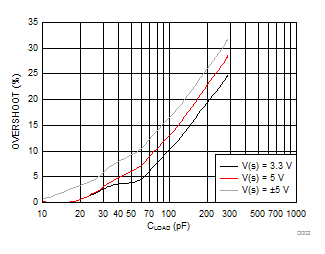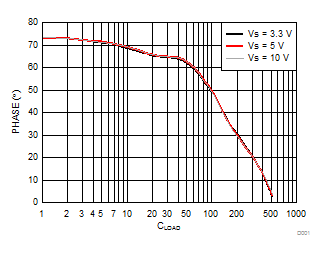SNOSD79 October 2017 LMV841-Q1 , LMV842-Q1 , LMV844-Q1
PRODUCTION DATA.
- 1 Features
- 2 Applications
- 3 Description
- 4 Revision History
- 5 Pin Configuration and Functions
- 6 Specifications
- 7 Detailed Description
- 8 Application and Implementation
- 9 Power Supply Recommendations
- 10Layout
- 11Device and Documentation Support
- 12Mechanical, Packaging, and Orderable Information
- 12机械、封装和可订购信息
Package Options
Mechanical Data (Package|Pins)
Thermal pad, mechanical data (Package|Pins)
- D|8
Orderable Information
6 Specifications
6.1 Absolute Maximum Ratings
See (1)(2)| MIN | MAX | UNIT | ||
|---|---|---|---|---|
| VIN differential | –300 | 300 | mV | |
| Supply voltage (V+ – V−) | 13.2 | V | ||
| Voltage at input and output pins | V+ + 0.3 | V− – 0.3 | V | |
| Input current | 10 | mA | ||
| Junction temperature (3) | 150 | °C | ||
| Soldering information | Infrared or convection (20 s) | 235 | °C | |
| Wave soldering lead temperature (10 s) | 260 | °C | ||
| Storage temperature, Tstg | −65 | 150 | °C | |
(1) Stresses beyond those listed under Absolute Maximum Ratings may cause permanent damage to the device. These are stress ratings only and functional operation of the device at these conditions is not implied. Exposure to absolute-maximum-rated conditions for extended periods may affect device reliability.
(2) If Military/Aerospace specified devices are required, contact the Texas Instruments Sales Office / Distributors for availability and specifications.
(3) The maximum power dissipation is a function of TJ(MAX), RθJA, and TA. The maximum allowable power dissipation at any ambient temperature is PD = (TJ(MAX) - TA) / RθJA. All numbers apply for packages soldered directly onto a PCB.
6.2 ESD Ratings
| VALUE | UNIT | |||
|---|---|---|---|---|
| V(ESD) | Electrostatic discharge | Human-body model (HBM), per AEC Q100-002(1) | ±2000 | V |
| Charged-device model (CDM), per AEC Q100-011 | ±250 | |||
(1) AEC Q100-002 indicates that HBM stressing shall be in accordance with the ANSI/ESDA/JEDEC JS-001 specification.
6.3 Recommended Operating Conditions
| MIN | MAX | UNIT | |
|---|---|---|---|
| Temperature(1) | −40 | 125 | °C |
| Supply voltage (V+ – V−) | 2.7 | 12 | V |
(1) The maximum power dissipation is a function of TJ(MAX), RθJA, and TA. The maximum allowable power dissipation at any ambient temperature is PD = (TJ(MAX) – TA) / RθJA. All numbers apply for packages soldered directly onto a PCB.
6.4 Thermal Information
| THERMAL METRIC(1) | LMV84x-Q1 | UNIT | |||||
|---|---|---|---|---|---|---|---|
| DCK (SC70) | DGK (VSSOP) | D (SOIC) | PW (TSSOP) | ||||
| 5 PINS | 8 PINS | 8 PINS | 14 PIN | 14 PINS | |||
| RθJA | Junction-to-ambient thermal resistance(2) | 269.9 | 179.2 | 121.4 | 85.4 | 113.3 | °C/W |
| RθJC(top) | Junction-to-case (top) thermal resistance | 93.8 | 69.2 | 65.7 | 43.5 | 38.9 | °C/W |
| RθJB | Junction-to-board thermal resistance | 48.8 | 99.7 | 62.0 | 39.8 | 56.3 | °C/W |
| ψJT | Junction-to-top characterization parameter | 2.0 | 10.0 | 16.5 | 9.2 | 3.1 | °C/W |
| ψJB | Junction-to-board characterization parameter | 47.9 | 98.3 | 61.4 | 39.6 | 55.6 | °C/W |
| RθJC(bot) | Junction-to-case (bottom) thermal resistance | N/A | N/A | N/A | N/A | N/A | °C/W |
(1) For more information about traditional and new thermal metrics, see the Semiconductor and IC Package Thermal Metrics application report.
(2) The maximum power dissipation is a function of TJ(MAX), RθJA, and TA. The maximum allowable power dissipation at any ambient temperature is PD = (TJ(MAX) - TA) / RθJA. All numbers apply for packages soldered directly onto a PCB.
6.5 Electrical Characteristics – 3.3 V
Unless otherwise specified, all limits are ensured for TA = 25°C, V+ = 3.3 V, V− = 0 V, VCM = V+ / 2, and RL > 10 MΩ to V+ / 2.(1)| PARAMETER | TEST CONDITIONS | MIN(2) | TYP(3) | MAX(2) | UNIT | ||
|---|---|---|---|---|---|---|---|
| VOS | Input offset voltage | –500 | ±50 | 500 | µV | ||
| at the temperature extremes | –800 | 800 | |||||
| TCVOS | Input offset voltage drift (4) | 0.5 | µV/°C | ||||
| at the temperature extremes | –5 | 5 | |||||
| IB | Input bias current (4) (5) | 0.3 | 10 | pA | |||
| at the temperature extremes | 300 | ||||||
| IOS | Input offset current | 40 | fA | ||||
| CMRR | Common-mode rejection ratio LMV841-Q1 | 0 V ≤ VCM ≤ 3.3 V | 84 | 112 | dB | ||
| at the temperature extremes | 80 | ||||||
| Common-mode rejection ratio LMV842-Q1 and LMV844-Q1 | 0 V ≤ VCM ≤ 3.3 V | 77 | 106 | dB | |||
| at the temperature extremes | 75 | ||||||
| PSRR | Power supply rejection ratio | 2.7 V ≤ V+ ≤ 12 V, VO = V+ / 2 | 86 | 108 | dB | ||
| at the temperature extremes | 82 | ||||||
| CMVR | Input common-mode voltage range | CMRR ≥ 50 dB, at the temperature extremes | –0.1 | 3.4 | V | ||
| AVOL | Large signal voltage gain | RL = 2 kΩ VO = 0.3 V to 3 V |
100 | 123 | dB | ||
| at the temperature extremes | 96 | ||||||
| RL = 10 kΩ VO = 0.2 V to 3.1 V |
100 | 131 | dB | ||||
| at the temperature extremes | 96 | ||||||
| VO | Output swing high, (measured from V+) |
RL = 2 kΩ to V+/2 | 52 | 80 | mV | ||
| at the temperature extremes | 120 | ||||||
| RL = 10 kΩ to V+/2 | 28 | 50 | mV | ||||
| at the temperature extremes | 70 | ||||||
| Output swing low, (measured from V−) |
RL = 2 kΩ to V+/2 | 65 | 100 | mV | |||
| at the temperature extremes | 120 | ||||||
| RL = 10 kΩ to V+/2 | 33 | 65 | mV | ||||
| at the temperature extremes | 75 | ||||||
| IO | Output short-circuit current(6)(7) | Sourcing VO = V+/2 VIN = 100 mV |
20 | 32 | mA | ||
| at the temperature extremes | 15 | ||||||
| Sinking VO = V+/2 VIN = −100 mV |
20 | 27 | mA | ||||
| at the temperature extremes | 15 | ||||||
| IS | Supply current | Per channel | 0.93 | 1.5 | mA | ||
| at the temperature extremes | 2 | ||||||
| SR | Slew rate (8) | AV = 1, VO = 2.3 VPP
10% to 90% |
2.5 | V/µs | |||
| GBW | Gain bandwidth product | 4.5 | MHz | ||||
| Φm | Phase margin | 67 | Deg | ||||
| en | Input-referred voltage noise | f = 1 kHz | 20 | nV/ |
|||
| ROUT | Open-loop output impedance | f = 3 MHz | 70 | Ω | |||
| THD+N | Total harmonic distortion + noise | f = 1 kHz , AV = 1 RL = 10 kΩ |
0.005% | ||||
| CIN | Input capacitance | 7 | pF | ||||
(1) Electrical table values apply only for factory testing conditions at the temperature indicated. Factory testing conditions result in very limited self-heating of the device.
(2) Limits are 100% production tested at 25°C. Limits over the operating temperature range are ensured through correlations using statistical quality control (SQC) method.
(3) Typical values represent the most likely parametric norm as determined at the time of characterization. Actual typical values may vary over time and will also depend on the application and configuration. The typical values are not tested and are not ensured on shipped production material.
(4) This parameter is ensured by design and/or characterization and is not tested in production.
(5) Positive current corresponds to current flowing into the device.
(6) The maximum power dissipation is a function of TJ(MAX), RθJA, and TA. The maximum allowable power dissipation at any ambient temperature is PD = (TJ(MAX) – TA) / RθJA. All numbers apply for packages soldered directly onto a PCB.
(7) Short circuit test is a momentary test.
(8) Number specified is the slower of positive and negative slew rates.
6.6 Electrical Characteristics – 5 V
Unless otherwise specified, all limits are ensured for TA = 25°C, V+ = 5 V, V− = 0 V, VCM = V+ / 2, and RL > 10 MΩ to V+ / 2.(1)| PARAMETER | TEST CONDITIONS | MIN(2) | TYP(3) | MAX(2) | UNIT | ||
|---|---|---|---|---|---|---|---|
| VOS | Input offset voltage | –500 | ±50 | 500 | µV | ||
| at the temperature extremes | –800 | 800 | |||||
| TCVOS | Input offset voltage drift(4) | 0.35 | µV/°C | ||||
| at the temperature extremes | –5 | 5 | |||||
| IB | Input bias current(4)(5) | 0.3 | 10 | pA | |||
| at the temperature extremes | 300 | ||||||
| IOS | Input offset current | 40 | fA | ||||
| CMRR | Common-mode rejection ratio LMV841-Q1 | 0 V ≤ VCM ≤ 5 V | 86 | 112 | dB | ||
| at the temperature extremes | 80 | ||||||
| Common-mode rejection ratio LMV842-Q1 and LMV844-Q1 | 0 V ≤ VCM ≤ 5 V | 81 | 106 | dB | |||
| at the temperature extremes | 79 | ||||||
| PSRR | Power supply rejection ratio | 2.7 V ≤ V+ ≤ 12 V, VO = V+/2 | 86 | 108 | dB | ||
| at the temperature extremes | 82 | ||||||
| CMVR | Input common-mode voltage range | CMRR ≥ 50 dB, at the temperature extremes | –0.2 | 5.2 | V | ||
| AVOL | Large signal voltage gain | RL = 2 kΩ VO = 0.3V to 4.7 V |
100 | 125 | dB | ||
| at the temperature extremes | 96 | ||||||
| RL = 10 kΩ VO = 0.2V to 4.8V |
100 | 133 | dB | ||||
| at the temperature extremes | 96 | ||||||
| VO | Output swing high, (measured from V+) |
RL = 2 kΩ to V+/2 | 68 | 100 | mV | ||
| at the temperature extremes | 120 | ||||||
| RL = 10 kΩ to V+/2 | 32 | 50 | mV | ||||
| at the temperature extremes | 70 | ||||||
| Output swing low, (measured from V–) |
RL = 2 kΩ to V+/2 | 78 | 120 | mV | |||
| at the temperature extremes | 140 | ||||||
| RL = 10 kΩ to V+/2 | 38 | 70 | mV | ||||
| at the temperature extremes | 80 | ||||||
| IO | Output short-circuit current(6) (7) | Sourcing VO = V+/2 VIN = 100 mV |
20 | 33 | mA | ||
| at the temperature extremes | 15 | ||||||
| Sinking VO = V+/2 VIN = −100 mV |
20 | 28 | mA | ||||
| at the temperature extremes | 15 | ||||||
| IS | Supply current | Per channel | 0.96 | 1.5 | mA | ||
| at the temperature extremes | 2 | ||||||
| SR | Slew rate (8) | AV = 1, VO = 4 VPP
10% to 90% |
2.5 | V/µs | |||
| GBW | Gain bandwidth product | 4.5 | MHz | ||||
| Φm | Phase margin | 67 | Deg | ||||
| en | Input-referred voltage noise | f = 1 kHz | 20 | nV/ |
|||
| ROUT | Open-loop output impedance | f = 3 MHz | 70 | Ω | |||
| THD+N | Total harmonic distortion + noise | f = 1 kHz , AV = 1 RL = 10 kΩ |
0.003% | ||||
| CIN | Input capacitance | 6 | pF | ||||
(1) Electrical table values apply only for factory testing conditions at the temperature indicated. Factory testing conditions result in very limited self-heating of the device.
(2) Limits are 100% production tested at 25°C. Limits over the operating temperature range are ensured through correlations using statistical quality control (SQC) method.
(3) Typical values represent the most likely parametric norm as determined at the time of characterization. Actual typical values may vary over time and will also depend on the application and configuration. The typical values are not tested and are not ensured on shipped production material.
(4) This parameter is ensured by design and/or characterization and is not tested in production.
(5) Positive current corresponds to current flowing into the device.
(6) The maximum power dissipation is a function of TJ(MAX), RθJA, and TA. The maximum allowable power dissipation at any ambient temperature is PD = (TJ(MAX) - TA) / RθJA. All numbers apply for packages soldered directly onto a PCB.
(7) Short circuit test is a momentary test.
(8) Number specified is the slower of positive and negative slew rates.
6.7 Electrical Characteristics – ±5-V
Unless otherwise specified, all limits are ensured for TA = 25°C, V+ = 5 V, V− = –5 V, VCM = 0 V, and RL > 10 MΩ to VCM.(1)| PARAMETER | TEST CONDITIONS | MIN(2) | TYP(3) | MAX(2) | UNIT | ||
|---|---|---|---|---|---|---|---|
| VOS | Input offset voltage | –500 | ±50 | 500 | µV | ||
| at the temperature extremes | –800 | 800 | |||||
| TCVOS | Input offset voltage drift (4) | 0.25 | µV/°C | ||||
| at the temperature extremes | –5 | 5 | |||||
| IB | Input bias current (4) (5) | 0.3 | 10 | pA | |||
| at the temperature extremes | 300 | ||||||
| IOS | Input offset current | 40 | fA | ||||
| CMRR | Common-mode rejection ratio LMV841-Q1 | –5 V ≤ VCM ≤ 5 V | 86 | 112 | dB | ||
| at the temperature extremes | 80 | ||||||
| Common-mode rejection ratio LMV842-Q1 and LMV844-Q1 | –5 V ≤ VCM ≤ 5 V | 86 | 106 | dB | |||
| at the temperature extremes | 80 | ||||||
| PSRR | Power supply rejection ratio | 2.7 V ≤ V+ ≤ 12 V, VO = 0 V | 86 | 108 | dB | ||
| at the temperature extremes | 82 | ||||||
| CMVR | Input common-mode voltage range | CMRR ≥ 50 dB | –5.2 | 5.2 | V | ||
| AVOL | Large signal voltage gain | RL = 2 kΩ VO = −4.7 V to 4.7 V |
100 | 126 | dB | ||
| at the temperature extremes | 96 | ||||||
| RL = 10 kΩ VO = −4.8 V to 4.8 V |
100 | 136 | dB | ||||
| at the temperature extremes | 96 | ||||||
| VO | Output swing high, (measured from V+) |
RL = 2 kΩ to 0 V | 95 | 130 | mV | ||
| at the temperature extremes | 155 | ||||||
| RL = 10 kΩ to 0 V | 44 | 75 | mV | ||||
| at the temperature extremes | 95 | ||||||
| Output swing low, (measured from V−) |
RL = 2 kΩ to 0 V | 105 | 160 | mV | |||
| at the temperature extremes | 200 | ||||||
| RL = 10 kΩ to 0 V | 52 | 80 | mV | ||||
| at the temperature extremes | 100 | ||||||
| IO | Output short-circuit current (6) (7) | Sourcing VO = 0 V VIN = 100 mV |
20 | 37 | mA | ||
| at the temperature extremes | 15 | ||||||
| Sinking VO = 0 V VIN = −100 mV |
20 | 29 | mA | ||||
| at the temperature extremes | 15 | ||||||
| IS | Supply current | Per channel | 1.03 | 1.7 | mA | ||
| at the temperature extremes | 2 | ||||||
| SR | Slew rate (8) | AV = 1, VO = 9 VPP
10% to 90% |
2.5 | V/µs | |||
| GBW | Gain bandwidth product | 4.5 | MHz | ||||
| Φm | Phase margin | 67 | Deg | ||||
| en | Input-referred voltage noise | f = 1 kHz | 20 | nV/ |
|||
| ROUT | Open-loop output impedance | f = 3 MHz | 70 | Ω | |||
| THD+N | Total harmonic distortion + noise | f = 1 kHz , AV = 1 RL = 10kΩ |
0.006% | ||||
| CIN | Input capacitance | 3 | pF | ||||
(1) Electrical table values apply only for factory testing conditions at the temperature indicated. Factory testing conditions result in very limited self-heating of the device.
(2) Limits are 100% production tested at 25°C. Limits over the operating temperature range are ensured through correlations using statistical quality control (SQC) method.
(3) Typical values represent the most likely parametric norm as determined at the time of characterization. Actual typical values may vary over time and will also depend on the application and configuration. The typical values are not tested and are not ensured on shipped production material.
(4) This parameter is ensured by design and/or characterization and is not tested in production.
(5) Positive current corresponds to current flowing into the device.
(6) The maximum power dissipation is a function of TJ(MAX), RθJA, and TA. The maximum allowable power dissipation at any ambient temperature is PD = (TJ(MAX) - TA) / RθJA. All numbers apply for packages soldered directly onto a PCB.
(7) Short circuit test is a momentary test.
(8) Number specified is the slower of positive and negative slew rates.
6.8 Typical Characteristics
At TA = 25°C, RL = 10 kΩ, VS = 5 V. Unless otherwise specified.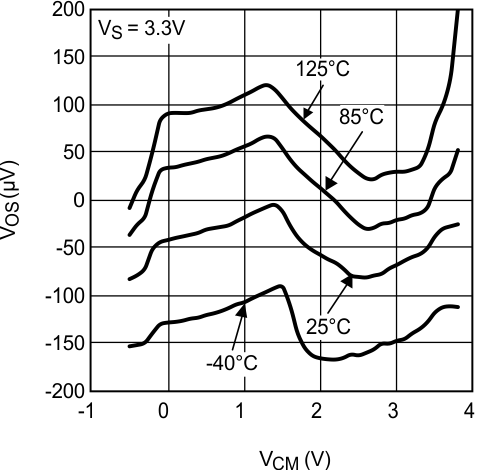 Figure 1. VOS vs VCM Over Temperature at 3.3 V
Figure 1. VOS vs VCM Over Temperature at 3.3 V
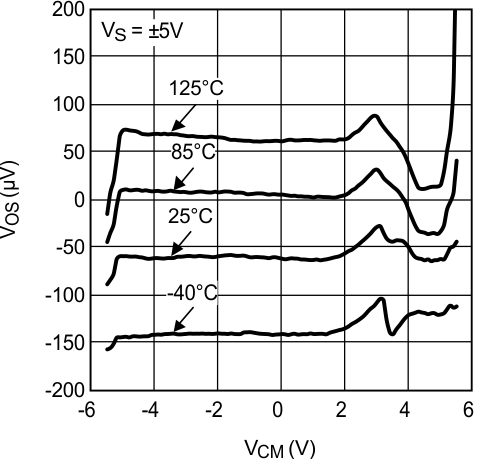 Figure 3. VOS vs VCM Over Temperature at ±5 V
Figure 3. VOS vs VCM Over Temperature at ±5 V
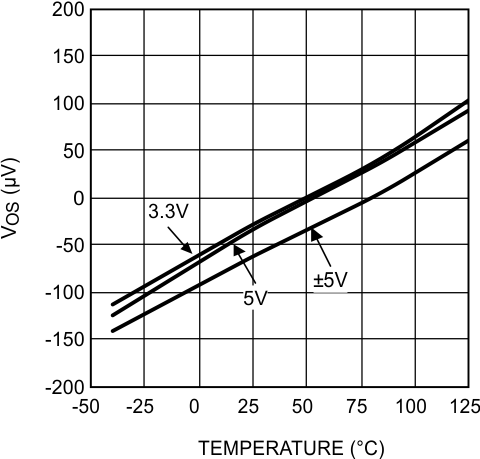 Figure 5. VOS vs Temperature
Figure 5. VOS vs Temperature
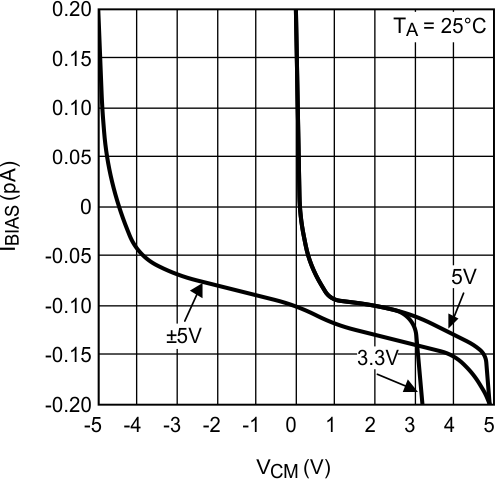 Figure 7. Input Bias Current vs VCM
Figure 7. Input Bias Current vs VCM
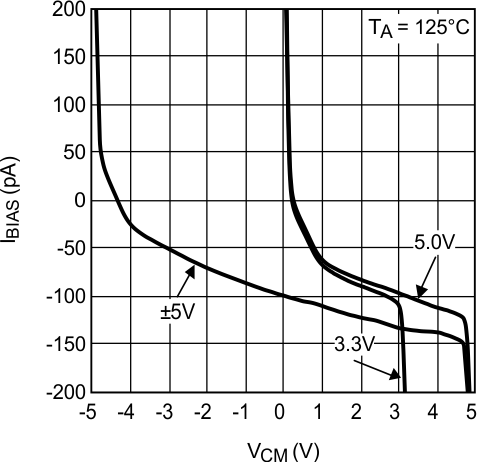 Figure 9. Input Bias Current vs VCM
Figure 9. Input Bias Current vs VCM
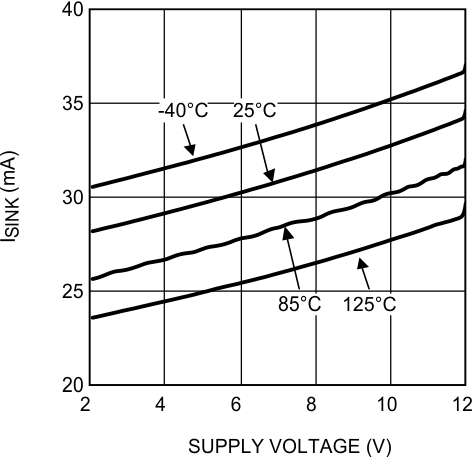 Figure 11. Sinking Current vs Supply Voltage
Figure 11. Sinking Current vs Supply Voltage
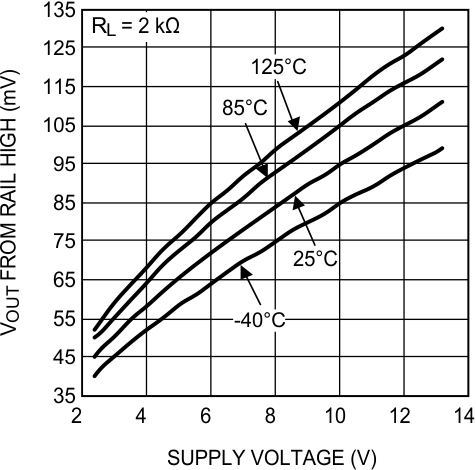 Figure 13. Output Swing High vs Supply Voltage RL = 2 kΩ
Figure 13. Output Swing High vs Supply Voltage RL = 2 kΩ
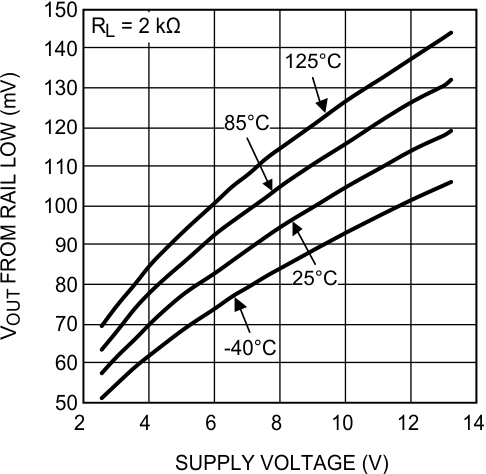 Figure 15. Output Swing Low vs Supply Voltage RL = 2 kΩ
Figure 15. Output Swing Low vs Supply Voltage RL = 2 kΩ
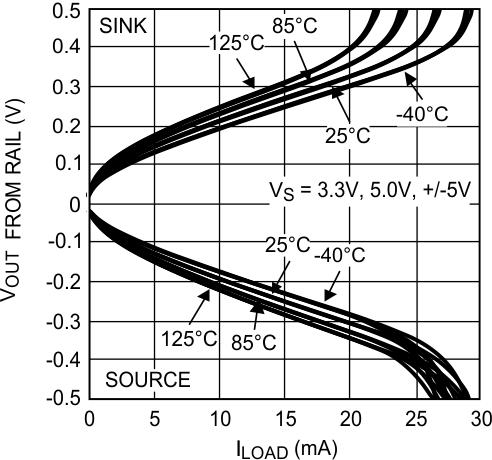 Figure 17. Output Voltage Swing vs Load Current
Figure 17. Output Voltage Swing vs Load Current
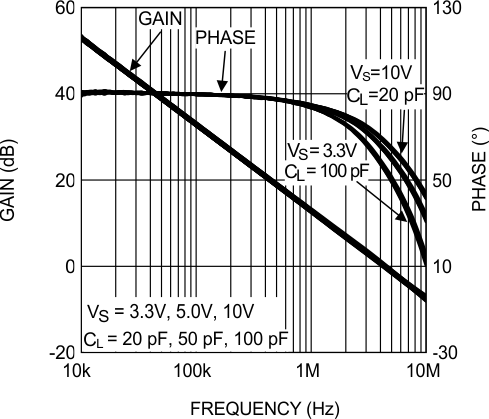 Figure 19. Open-Loop Frequency Response Over Load Conditions
Figure 19. Open-Loop Frequency Response Over Load Conditions
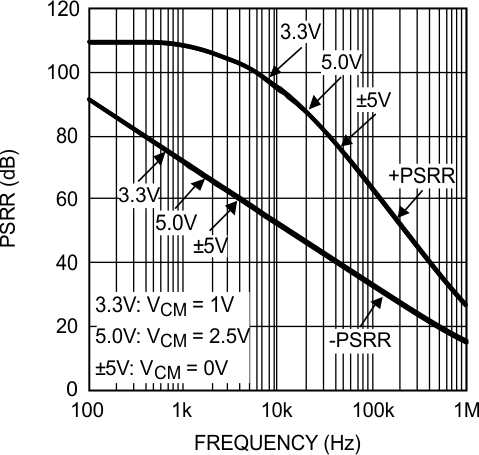 Figure 21. PSRR vs Frequency
Figure 21. PSRR vs Frequency
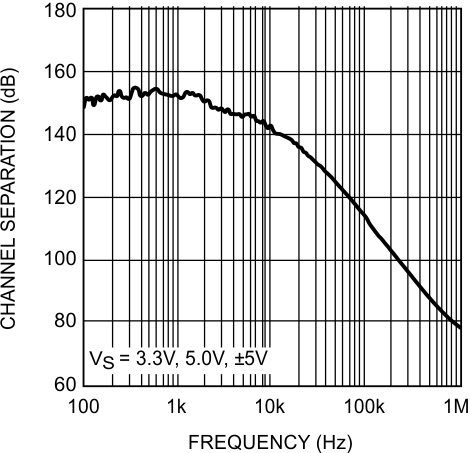 Figure 23. Channel Separation vs Frequency
Figure 23. Channel Separation vs Frequency
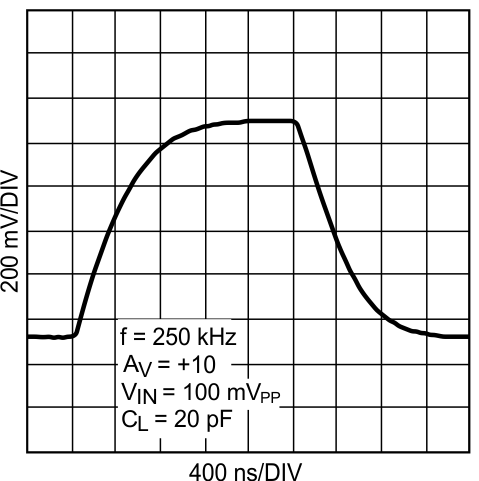 Figure 25. Large Signal Step Response With Gain = 10
Figure 25. Large Signal Step Response With Gain = 10
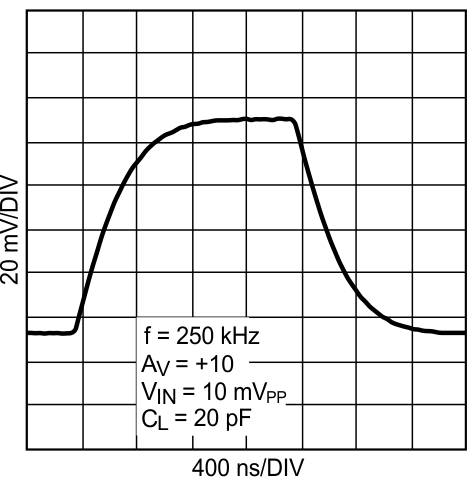 Figure 27. Small Signal Step Response With Gain = 10
Figure 27. Small Signal Step Response With Gain = 10
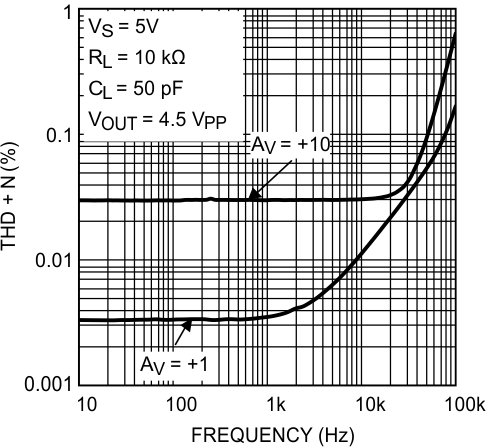 Figure 31. THD+N vs Frequency
Figure 31. THD+N vs Frequency
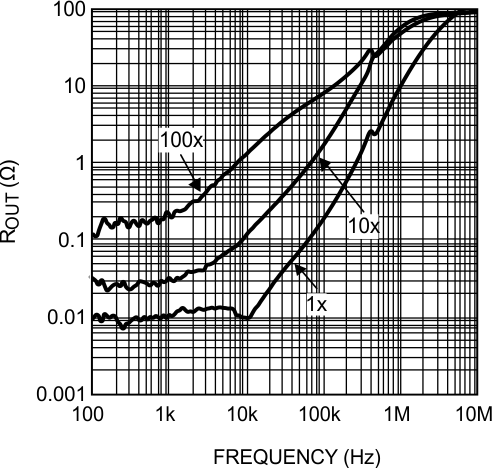 Figure 33. Closed-Loop Output Impedance vs Frequency
Figure 33. Closed-Loop Output Impedance vs Frequency
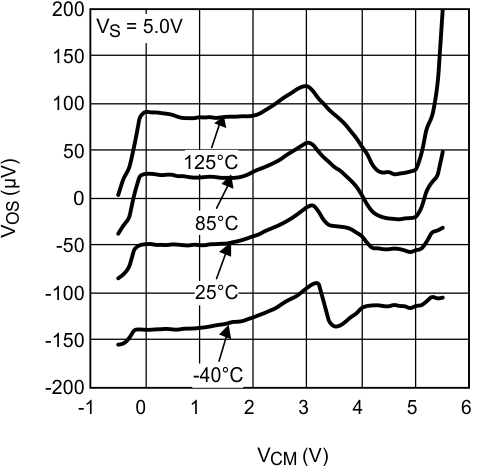 Figure 2. VOS vs VCM Over Temperature at 5 V
Figure 2. VOS vs VCM Over Temperature at 5 V
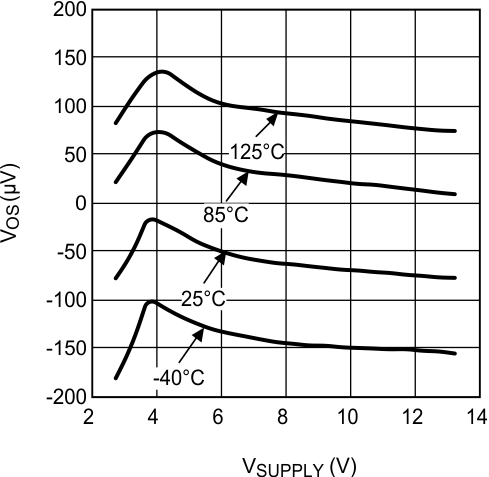 Figure 4. VOS vs Supply Voltage
Figure 4. VOS vs Supply Voltage
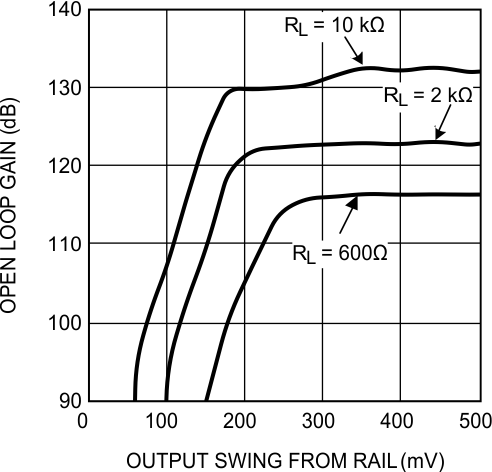 Figure 6. DC Gain vs VOUT
Figure 6. DC Gain vs VOUT
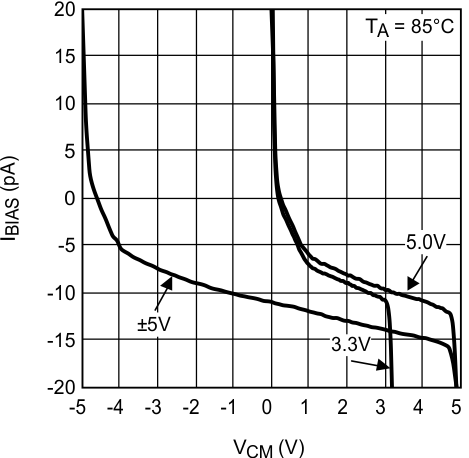 Figure 8. Input Bias Current vs VCM
Figure 8. Input Bias Current vs VCM
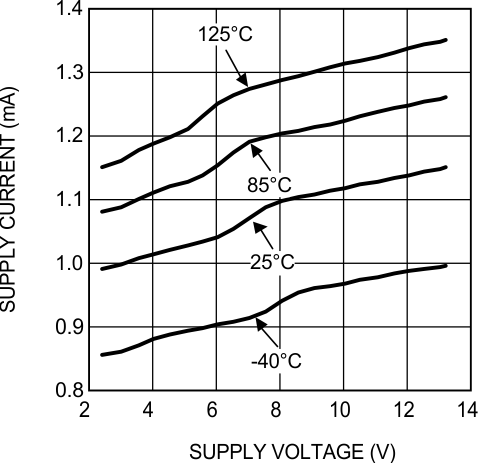 Figure 10. Supply Current Per Channel vs Supply Voltage
Figure 10. Supply Current Per Channel vs Supply Voltage
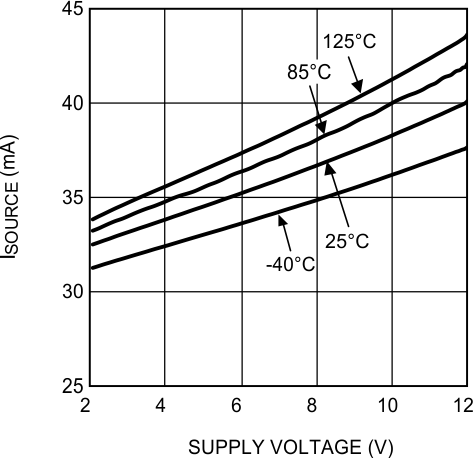 Figure 12. Sourcing Current vs Supply Voltage
Figure 12. Sourcing Current vs Supply Voltage
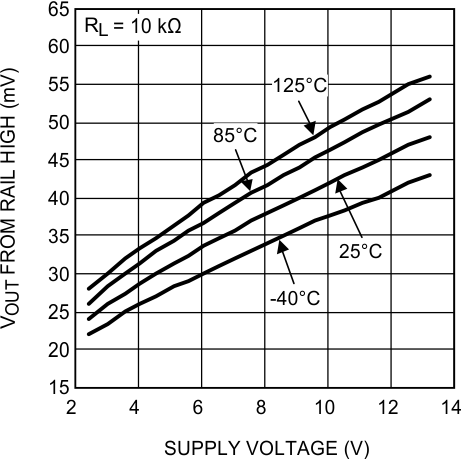 Figure 14. Output Swing High vs Supply Voltage RL = 10 kΩ
Figure 14. Output Swing High vs Supply Voltage RL = 10 kΩ
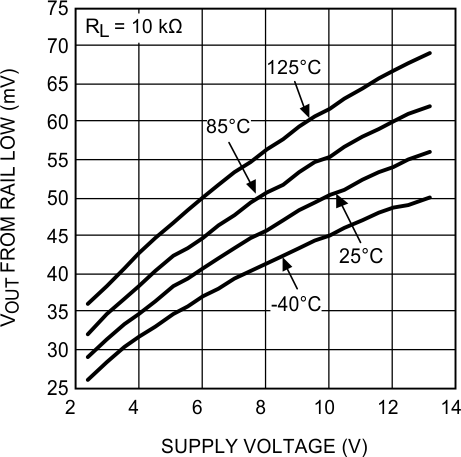 Figure 16. Output Swing Low vs Supply Voltage RL = 10 kΩ
Figure 16. Output Swing Low vs Supply Voltage RL = 10 kΩ
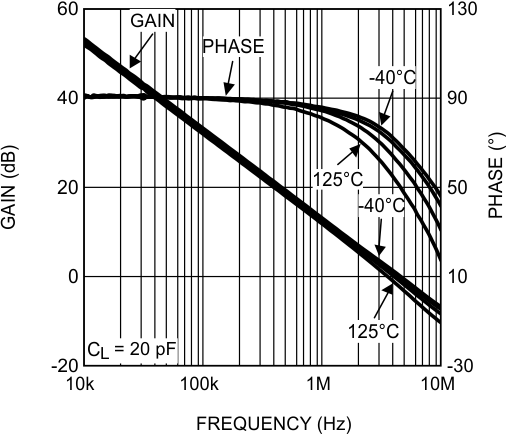 Figure 18. Open-Loop Frequency Response Over Temperature
Figure 18. Open-Loop Frequency Response Over Temperature
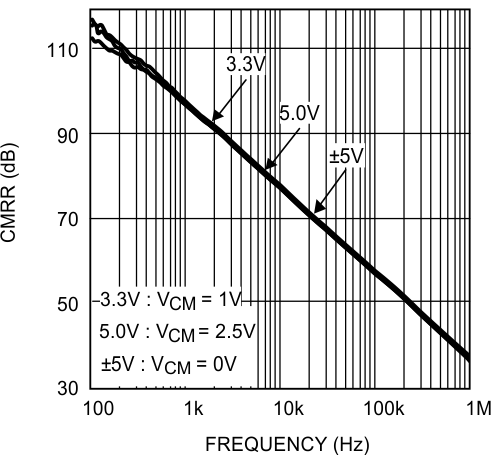 Figure 22. CMRR vs Frequency
Figure 22. CMRR vs Frequency
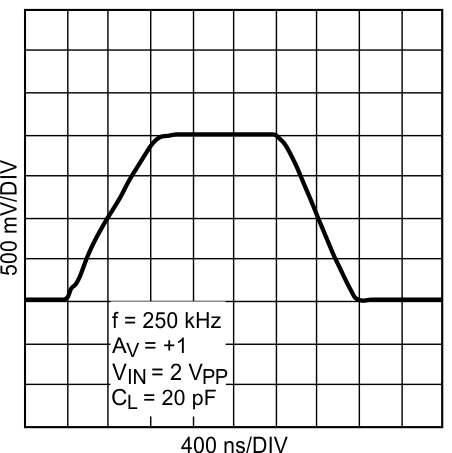 Figure 24. Large Signal Step Response With Gain = 1
Figure 24. Large Signal Step Response With Gain = 1
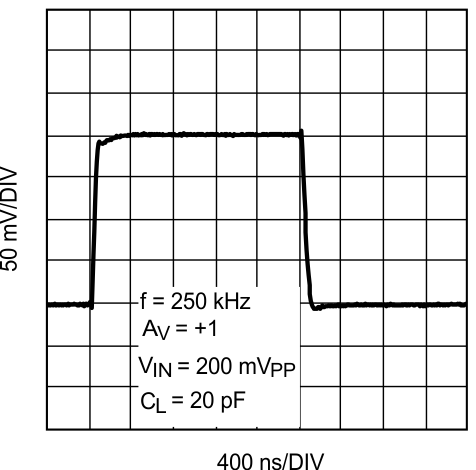 Figure 26. Small Signal Step Response With Gain = 1
Figure 26. Small Signal Step Response With Gain = 1
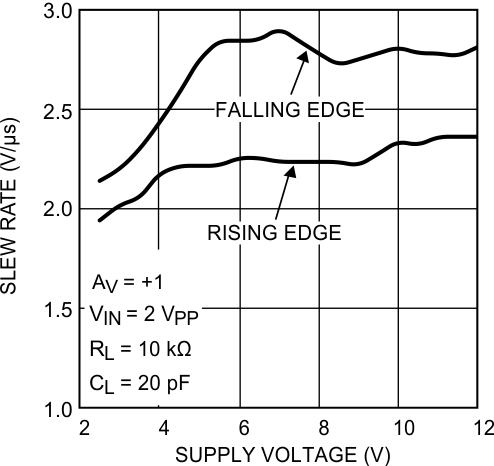 Figure 28. Slew Rate vs Supply Voltage
Figure 28. Slew Rate vs Supply Voltage
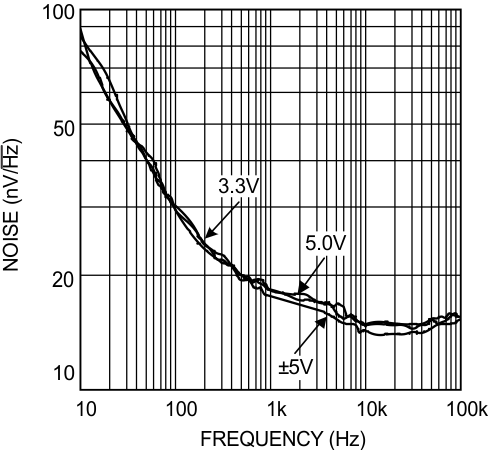 Figure 30. Input Voltage Noise vs Frequency
Figure 30. Input Voltage Noise vs Frequency
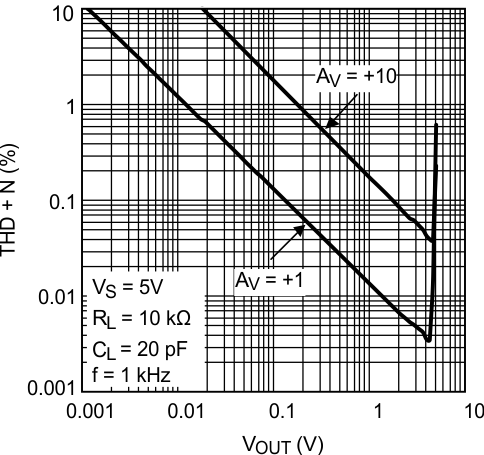 Figure 32. THD+N vs VOUT
Figure 32. THD+N vs VOUT
